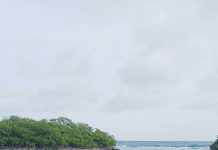Shhh…do you hear that? Close your mouth and eyes. Open your ears and pay attention. It’s the sound of World Listening Day approaching; an annual global event held every July 18. www.worldlisteningproject.org.
The 2019 theme is “Listening With” created by internationally acclaimed sound artist Annea Lockwood. “Listening with an awareness that all around you are other life-forms simultaneously listening and sensing with you – plant roots, owls, cicadas, voles – mutually intertwined within the web of vibrations which animate and surround our planet.”
The World Listening Project (WLP) is a not-for-profit organization devoted to understanding the world and its natural environment, societies and cultures through the practices of listening and field recording. The WLP was founded in 2008 and is supported by the Midwest Society for Acoustic Ecology, a non-profit membership organization affiliated with the World Forum for Acoustic Ecology.
The World Forum for Acoustic Ecology (WFAE), founded in 1993, is an international association of affiliated organizations and individuals, who share a common concern with the state of the world’s soundscapes. Its members represent a multi-disciplinary spectrum of individuals engaged in the study of the social, cultural and ecological aspects of the sonic environment. www.wfae.net. The International Conference on Acoustic Ecology will be held in October 2019.
The American Society for Acoustic Ecology (ASAE) is a membership organization dedicated to promoting a holistic understanding of sound, listening, and environment through research and creative exploration. www.acousticecology.us.
Human Listening
What can listening to nature teach humans? A lot.
Relaxing by a seashore, hiking through the forest, or walking in a park can calm the brain and body. And reduce stress. Being in nature involves myriad senses: listening, seeing, smelling, and feeling. But, acoustic ecology studies sounds.
Research is surmising that nature sounds can physically modify the synapses in the brain. And the changes in the brain influence the body. How many people use meditation apps with nature sounds to promote sleep? How many trauma victims use nature as a healing place?
Mother Nature is mothering. Listen to the sound of the wind rustling leafs. Listen to birds singing. Listen to the surge of ocean waves. Ahhh. That’s how I spell relief. Spending time in nature with open ears can be beneficial for human beings.
“The Listening Walk,” a picture book for kids, by Paul Showers is recommended. A little girl and her father take a quiet walk and identify the sounds around them. Soon the girl discovers an extraordinary world of sounds in her everyday environment.
Turn Down Sound Pollution
As noted in Bernie Krause’s book, The Great Animal Orchestra, “A great silence is spreading over the natural world even as the sound of man is becoming deafening. Little by little the vast orchestra of life, the chorus of the natural world, is in the process of being quietened. There has been a massive decrease in the density and diversity of key vocal creatures, both large and small. The sense of desolation extends beyond mere silence.”
Rock-in with the Natural World
Turn off technology and go outside to listen. The woods are full of natural sounds. Take a picnic basket and a blanket. Put on your listening ears and enjoy.
Take the in-ear headphones out when you visit the beach. Turn off the human music for a while. Listen to the rhythmic vibrations of nature.
“I only went out for a walk and finally concluded to stay out till sundown, for going out, I found, was really going in.” —John Muir
Melissa Martin, Ph.D., is an author, columnist, educator, and therapist. She lives in the US.
By Melissa Martin
















